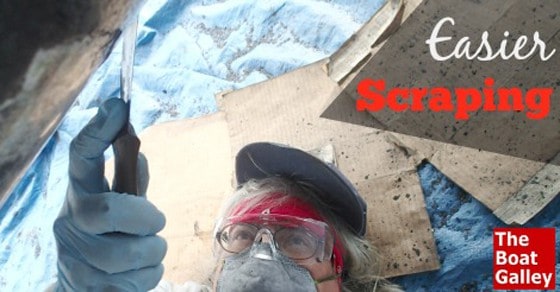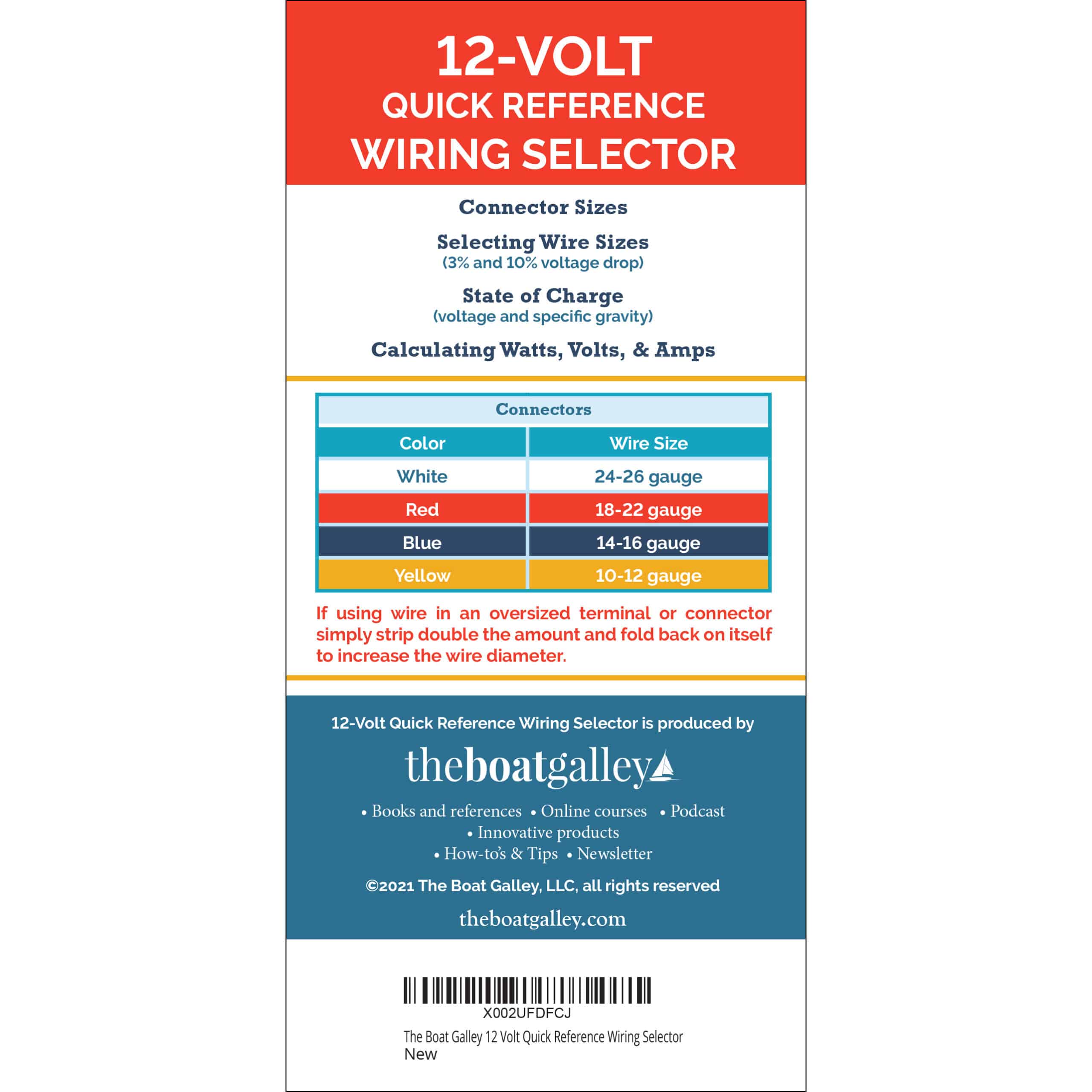If you already know about this tool, you’ll say “well of course.” If, like Dave and I, you’ve never heard of it, it’s the best thing since sliced bread. Or maybe any kind of bread.
This past fall, we ended up scraping all the bottom paint off Barefoot Gal. About a third came off very easily, a third with more effort, and a third simply did not want to come off (we joked that it must have been mixed with 5200).*
Now the thing about a catamaran vs. a monohull is that the cat has a lot of bottom area that’s parallel to the ground. I laid on my back for days — weeks — on end, scraping away while Dave followed behind, wetsanding it down to the gel coat. I tried several different scrapers and kept returning to a simple putty knife as doing the best job without gouging up the gel coat.
As I was about three-quarters done, another Gemini came into the yard. The owner saw what I was doing and went back to his tool bag and handed me this slightly different scraper, telling me to see if it worked any better (he is a retired shop teacher and obviously knew the answer). I couldn’t believe the difference — it literally cut the work in half. How much time would it have saved if we’d had it from the start?
It’s called a 6-in-1 painter’s tool. While it has a sharp edge which makes the scraping much easier, it doesn’t tear up the gel coat like the hook-type paint scrapers do (unless, of course, you put a huge amount of pressure on the scraping edge). The big advantage over a putty knife is that the scraping edge can be sharpened. I found that I needed to sharpen it every 4 to 6 hours of use. To be honest, the scraper is the only one of the six “functions” that I’ve used.
That evening, I ordered my own 6-in-1 tool. About a week later, I ordered a second one so that Dave and I could both use one at the same time. You can get them at most home improvement and hardware stores, I ordered ours online as the nearest store was over a half hour away. This is what I got:
Since then, we’ve used it for many other projects as well — notably, cleaning off old sealant when rebedding deck hardware and getting all sorts of “gunk” off the engine and engine compartment. We found it much better for just about everything — the only time that the putty knife is better is when we need something really thin to get between parts.
*Some have asked why we didn’t soda blast the paint off or use a chemical paint remover. We didn’t soda or sand blast as we didn’t want to remove or damage the gel coat. We tested using a chemical paint remover, and hated the thought of of working with one over our head. So we scraped and wetsanded.

Carolyn Shearlock has lived aboard full-time for 17 years, splitting her time between a Tayana 37 monohull and a Gemini 105 catamaran. She’s cruised over 14,000 miles, from Pacific Mexico and Central America to Florida and the Bahamas, gaining firsthand experience with the joys and challenges of life on the water.
Through The Boat Galley, Carolyn has helped thousands of people explore, prepare for, and enjoy life afloat. She shares her expertise as an instructor at Cruisers University, in leading boating publications, and through her bestselling book, The Boat Galley Cookbook. She is passionate about helping others embark on their liveaboard journey—making life on the water simpler, safer, and more enjoyable.
Your VHF can do so much! Learn how to use ALL its features for just $39:












Colin Mombourquette says
One of my favourite tools, you can even clean under your fingernails with the pointy end.
Marc Kornutik says
We used the Farrow System on our 2002 Beneteau. It’s a heated, wet powered glass media applied with only (if I recall correctly) 50-60 psi. No dust & paint/used media collected on tarps and taken away.
Left our gelcoat intact with the surface profiled & ready to accept the barrier coat. (for which I chose all SeaHawk products) Coming up on 4th season now… and still in perfect shape. Thrilled w/results.
Michael R Miller says
Yup! Only tool we use really. Other than for tiny little putty jobs, this is it. We have worn quit few of these out. FYI, the curved part is to scrape a roller after use.
Marc Kornutik says
BTW… Love you website !
And we didn’t go w/sodablast or chem strip for same reasons as you but time constraints (thankfully) forced me to find a much quicker method of prep.
Julie Anderson says
We have always know to use a plastic scrapper on an inflatable dinghy for clean the bottom. But oops! We didn’t listen and put a big hole in the bottom the other day. Yikes!!! Thankfully the patch is currently holding air. Fingers crossed.
Quinn says
I have one in the workshop and one in the house – very useful for scraping and cleaning and getting into tight spots!
Bob Dubuque says
When I took 40 yrs of ablative paint off of my hull, I used a cheap Harbor Freight planer, set at the lowest setting. Took off 90% with almost no dings, not sure if it would work on other paints, though worth a try. Wouldn’t work on concave surfaces next to the keel & rudder.
The Boat Galley says
Interesting . . . we didn’t try anything like that. But had I thought about it, I might have.
Ericandkerry Meiier says
We own a Marina and my family owned a boatyard. I have sanded and painted boats for the past 40 years. Most people use a sander. A dustless sander works best. Wet sanding is old schools and a big mess.
Most yards require a sander with a dust collection system.
Kellie Lieshout says
I keep this tool in my kitchen drawer with the other utensils. It’s uses for food preparation are never ending.
It shucks corn wonderfully too!
Carolyn Shearlock says
I LOVE it! Hadn’t thought of it in the galley, but yeah . . . I see it.
Gregory P says
Also great for cleaning the gunk off anchor lines (the curved part!)
Diane Mercaldo says
Looking into this. Valentine has been in the water for 2 years and will need her hull scraped and repainted.Thanks for the posting.
Annabel Stewart says
Matt Stewart another interesting one!